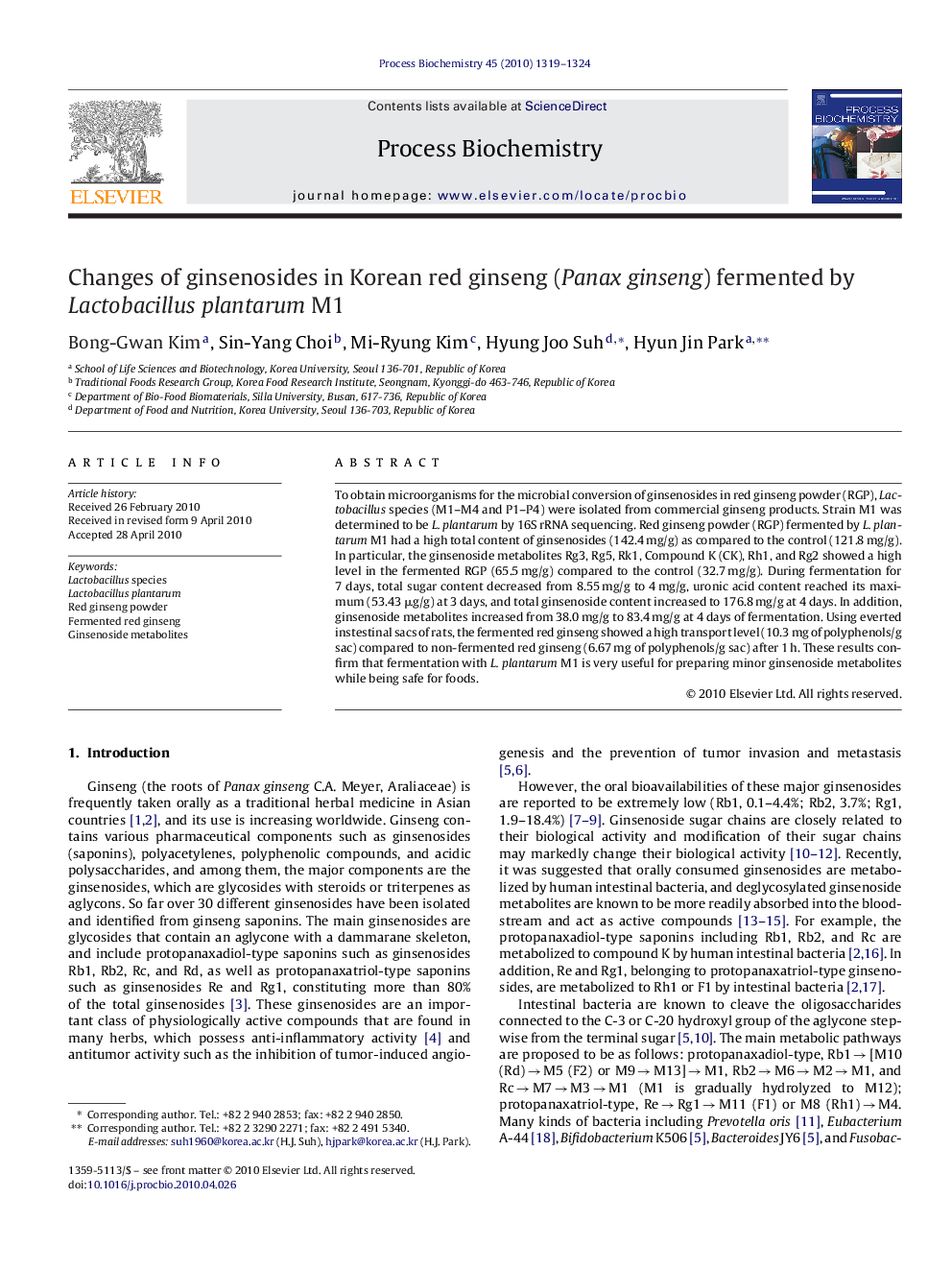| Article ID | Journal | Published Year | Pages | File Type |
|---|---|---|---|---|
| 34998 | Process Biochemistry | 2010 | 6 Pages |
To obtain microorganisms for the microbial conversion of ginsenosides in red ginseng powder (RGP), Lactobacillus species (M1–M4 and P1–P4) were isolated from commercial ginseng products. Strain M1 was determined to be L. plantarum by 16S rRNA sequencing. Red ginseng powder (RGP) fermented by L. plantarum M1 had a high total content of ginsenosides (142.4 mg/g) as compared to the control (121.8 mg/g). In particular, the ginsenoside metabolites Rg3, Rg5, Rk1, Compound K (CK), Rh1, and Rg2 showed a high level in the fermented RGP (65.5 mg/g) compared to the control (32.7 mg/g). During fermentation for 7 days, total sugar content decreased from 8.55 mg/g to 4 mg/g, uronic acid content reached its maximum (53.43 μg/g) at 3 days, and total ginsenoside content increased to 176.8 mg/g at 4 days. In addition, ginsenoside metabolites increased from 38.0 mg/g to 83.4 mg/g at 4 days of fermentation. Using everted instestinal sacs of rats, the fermented red ginseng showed a high transport level (10.3 mg of polyphenols/g sac) compared to non-fermented red ginseng (6.67 mg of polyphenols/g sac) after 1 h. These results confirm that fermentation with L. plantarum M1 is very useful for preparing minor ginsenoside metabolites while being safe for foods.
